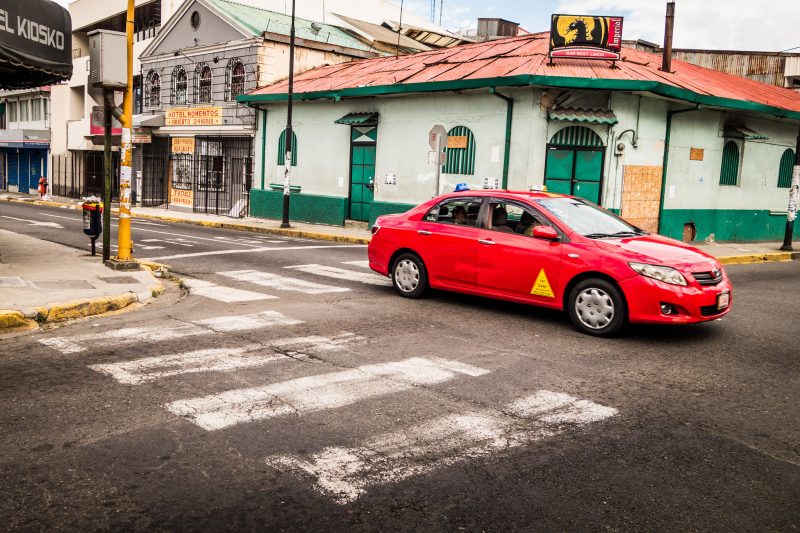CHN: What has been the IDB’s experience of developing long-term strategies in Latin America and the Caribbean?
ALA: Well for three years now we’ve been working with several countries in the region – Costa Rica, Columbia, Ecuador, Peru, Mexico and Argentina – working with the governments, but also very importantly local universities, to build their capacity to develop long-term strategies, to do the modelling scenarios that can allow the governments to make decisions around what their long-term pathway could look like.
How do you see this could raise ambition on climate action?
What we are seeing in Costa Rica – the country that is most advanced with that, and you may have seen here at the Cop the president earlier this week announced their 2050 pathway – we see that these pathways are really valuable ways of enabling governments to identify a long-term vision, and then work backwards to see what should be the priority actions and investments to be taken now in the short-term, as well as more medium-term goals.
We see this process as really important for helping countries to enhance and update their nationally determined contributions, as countries are doing and will be asked to submit next year in 2020. So, we really think that these long-term strategies provide governments with much better information to be able to increase ambition now, and confidence of which sectors should be prioritised in light of their long-term pathway.
Is there an example of any of these sectors that should be prioritised?
For example, in Costa Rica, they already have very low carbon electricity, and two main priorities have been identified there. A shift to electro-mobility – so moving out of gasoline cars and buses, into electrics buses and cars – and improving public sector transportation as well. And the agriculture sector, and in particular how to build on their very strong experience of ecosystem services, nature-based solutions for the agriculture sector, to reduce carbon emissions associated with agriculture, as well as promoting resilience in the sector.
What are the biggest challenges at the moment, and which are the countries that are presenting more difficulties?
I think all countries are facing very similar challenges as they look at this agenda. I think what our new report, in fact just launched this week here in Madrid – we launched a new report Getting to Net Zero Emissions: Lessons from Latin America and the Caribbean – what that report shows actually is that all countries need to commit to reaching net zero emissions, net zero CO2 emissions, by 2050, if the 1.5/well below 2 degrees, 1.5 goal is to be met.
What the experience is showing as well is that the transition is technically possible, and we see these key priority sectors relating to electro-mobility, to decarbonising the electricity sector fully, shifting other sectors into electricity when the electricity sector is decarbonised – so not just mobility, but also heating, industry, buildings. Also, reducing and halting deforestation and increasing reforestation, and bringing in other nature-based solutions. As well as also the importance for reducing waste and wasteful use of different resources whether that’s energy, water, and food as well. Importantly, the food sector is going to be important in that transition.
What we also see, which is really good to see, is that there can be very significant economic benefits of making the low carbon transition. We know, from studies we’ve worked on with the International Labour Organisation, that at least 1 million new jobs can be created in Latin America and the Caribbean. But also, very importantly we see that their can be very significant benefits in terms of GDP, gross domestic product, so economic growth benefits.
These are associated with some of the avoided costs that may be needed, particularly in the power sector; we estimate that at being 100 billion dollars of avoided costs, through promoting much more energy efficiency, renewable energy, avoiding use of fossil fuels; as well as some of the avoided costs that are associated with air pollution, congestion, health improvements – all of these which we’ve calculated in the context of the countries we are working with, and have identified that there are real economic opportunities.
We also know, as I think is being discussed here at the Cop, that the current nationally determined contributions are insufficient to reach the objectives of the Paris Agreement. So the updating of those next year will be really important, and we see that as NDC’s are updated the priority investments should be developed in a way that ensures that potential stranded assets can be avoided, and we estimate that by taking more ambitious action now in the short term, that there could be around 90 billion dollars of avoided costs related to stranded assets if for example countries continue to invest in fossil fuels as opposed to now moving quickly to low carbon technological solutions.
We also see that the long-term strategies can guide policy makers to identify where the policy reforms are going to be most needed and most urgent.
I think finally, but really importantly, the development of a long-term pathway, the process by which that is done, really requires governments to engage with their citizens, with consumers, with workers, with the private sector, and the dialogue that takes place around that is really important to ensure there is real engagement from the whole of the country, and that importantly workers and others that may be affected by some of the transition, that solutions and other types of opportunities, or retraining or re-skilling can be identified and addressed through this process.
The IDB’s new publication, Getting to Net-Zero Emissions: Lessons from Latin America and the Caribbean, can be found here in English and Spanish.
This post was sponsored by the Inter-American Development Bank. See our editorial guidelines for what this means.
